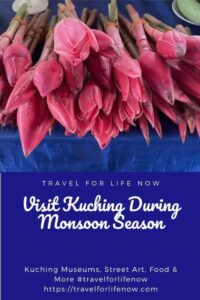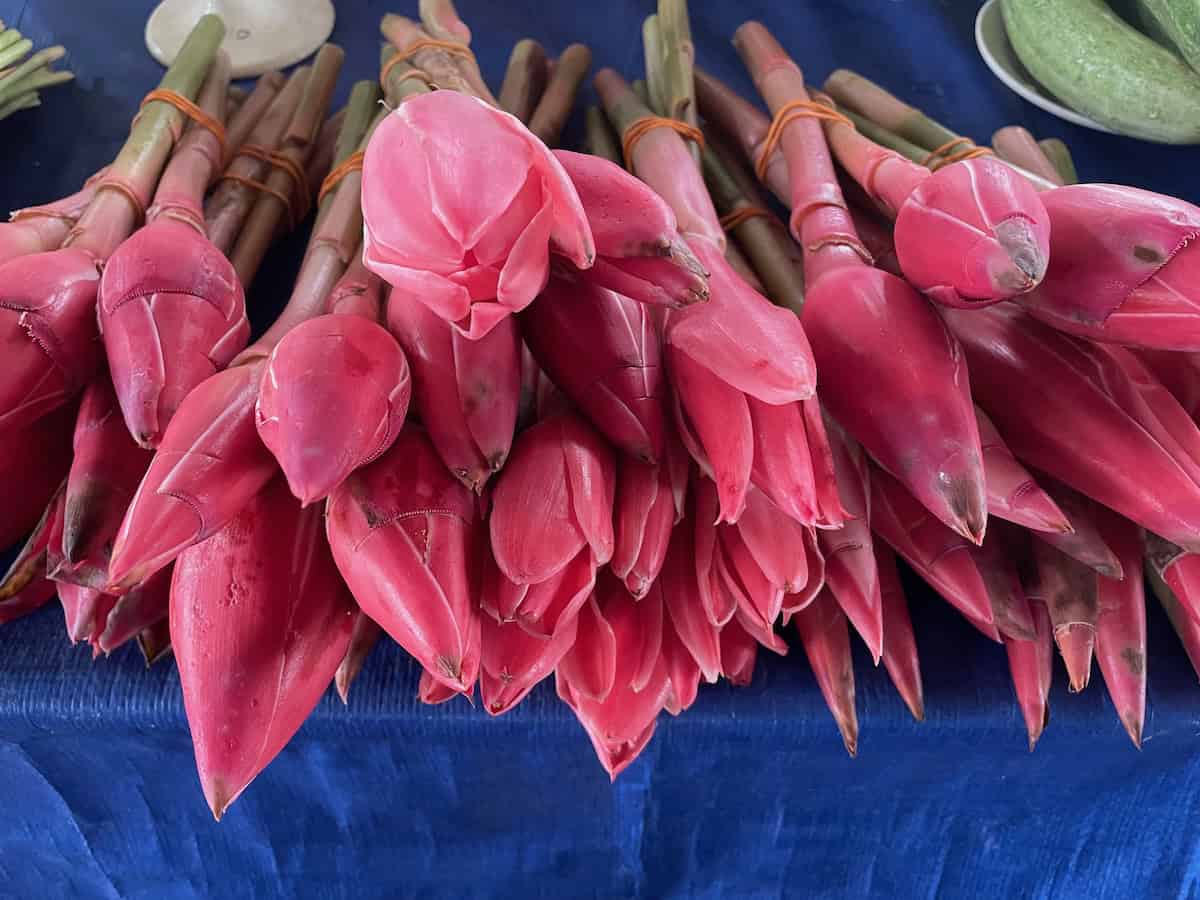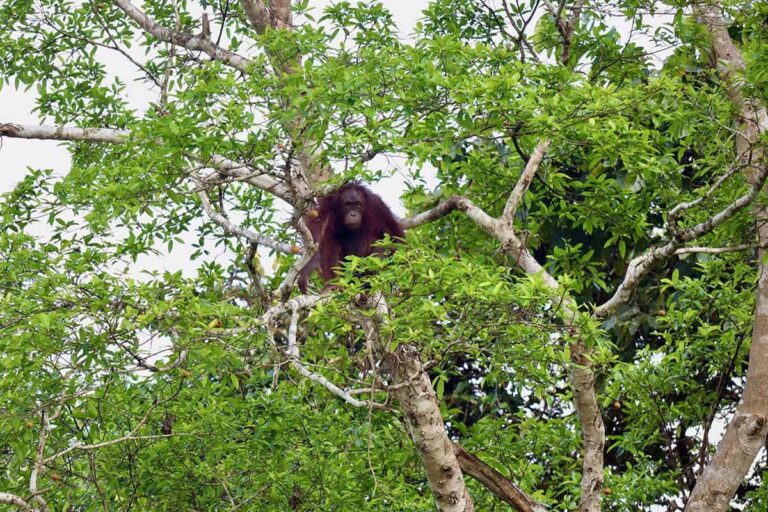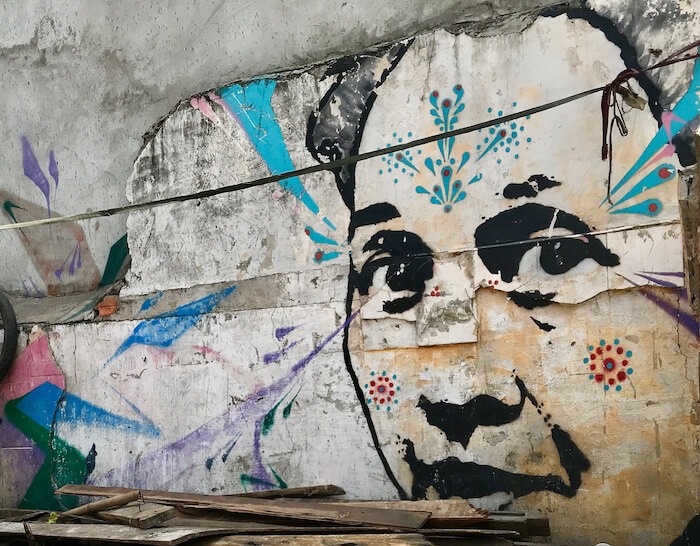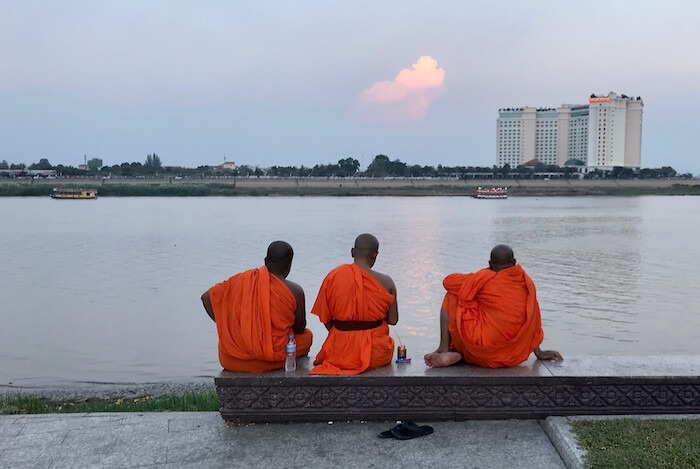Kuching During Monsoon Season: Our Adventure
By Reggie Ang
Our first trip of 2025 was to Kuching in Sarawak, Borneo. We’d been to Borneo once before when we took a river safari on the Kinabatangan River where we saw orangutans, pygmy elephants, proboscis monkeys, hornbills, and crocodiles. We were hoping to see orangutans again. We decided to visit Kuching during Monsoon season (January). It was the rainy season in Singapore, so we figured the weather would be the same.
It was.
We boarded AirAsia 1776 from Terminal 4 of Changi Airport for the 90-minute flight. Since we could not get a Grab (the Asian equivalent of Uber) to work when we landed, we took a regular taxi (MYR35) to our hotel, Hilton Kuching, on the waterfront. We checked into a beautiful room with a view of the Sarawak River.
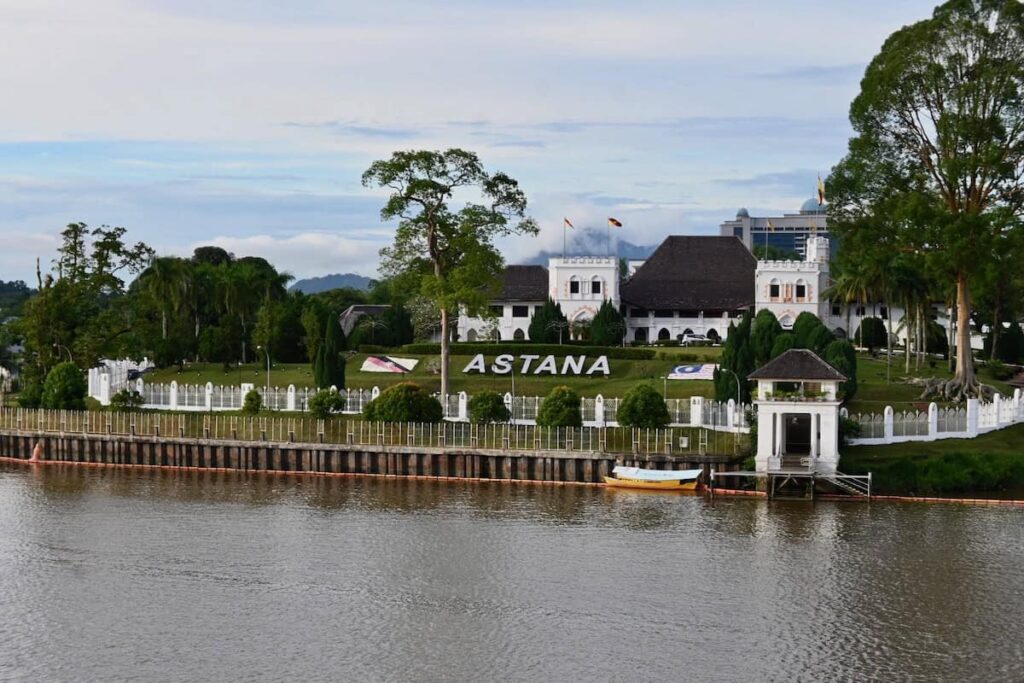
Where Is Kuching, Sarawak, Borneo?
Where exactly were we? The island is Borneo – it is divided into three countries, Indonesia, Malaysia, and Brunei. Kuching is a city in the Malaysian State of Sarawak. Many people refer to Kuching as Sarawak, not Kuching. It is one of the gateway cities to the jungles of Borneo.
After settling in, we decided to take a walk along the river. First stop for a late lunch at Peanut Anchovies (Jalan Main Bazaar). Sue had the regular nasi lemak with fried chicken while I had the version with beef rendang. Conclusion: stick with the standard version.
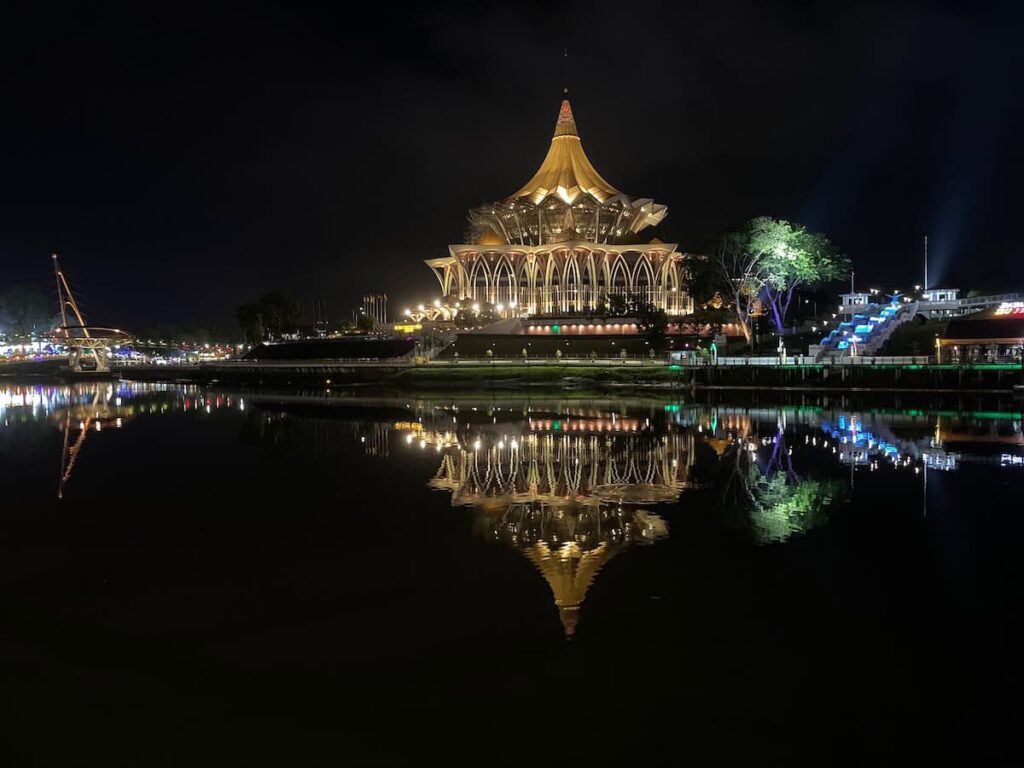
Stumbling Onto A Free Walking Tour
Around the corner from Peanut Anchovies is Paradesa Borneo (1 Wayang Street), a local travel & tour operator. They were offering free 90mins walking tours (Mondays, Wednesdays, and Fridays) which we decided to take advantage of. It turned out to be a great idea. We walked along the old shophouses on Jalan Main Bazaar. Today they are mostly souvenir shops, bakeries, and cafes but back in the day there were businesses related to trading with the boats that sailed up the Sarawak River.
Our walk took us up to the Square Tower, the Old Courthouse, and the Round Tower. You can get additional tourist information from the Old Courthouse. Tours to the National Parks can also be booked here. The Square and Round Towers are now fine dining restaurants.
Avra, our tour guide, pointed out the oldest Indian Mosque in Kuching which was slated to be demolished years ago. The local community banded together to petition against its demolition. It is located right across from the new floating India Mosque Kuching. Next to the mosque on Gambier Street is Spice Row where the locals shop for dried provisions and spices.
From there we wandered to the Open Air Market, housing halal and non-halal eateries mostly opened for business in the evening. Around the corner from the market is India Street. This is a covered area with goldsmith shops, clothing stalls, and the occasional sundries.
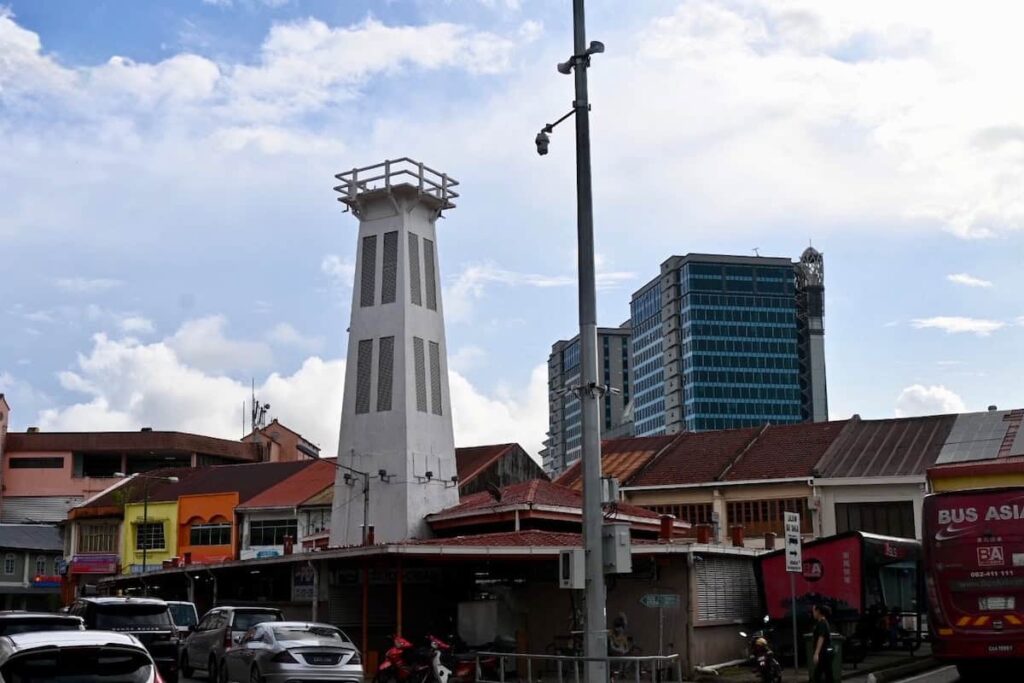
Our First Sighting Of Street Art
Walking around Chinatown, we admired several beautifully rendered murals painted by local artist Leonard Siaw. He depicted scenes of historical significance and drew lovely portraits of the shopkeepers, and vendors, folks who had lived and worked in the area from decades ago.
We rounded up the tour through the archway that is Bishopsgate, so named for the Bishops who used this as a shortcut down to Chinatown from St Thomas’s Cathedral.
After the tour, we headed back along the waterfront to admire the buildings across the river. Namely, the Sarawak State Legislative Assembly, an iconic building that can be seen anywhere along the river. It has a 9-pointed geometric star-shaped gold roof with historical and cultural significance as a meeting place.
Next to the State Assembly is The Astana, the palace of the Governor of Sarawak. To the right of the State Assembly is the Fort Margherita.
Dinner was at the Bla Bla Bla Restaurant (27 Jalan Tabuan) known for its crispy oyster pancake, and refreshing duck mango. Don’t miss midin, a local fern.
Day 1 was completed with another stroll along the river to see the views at night.
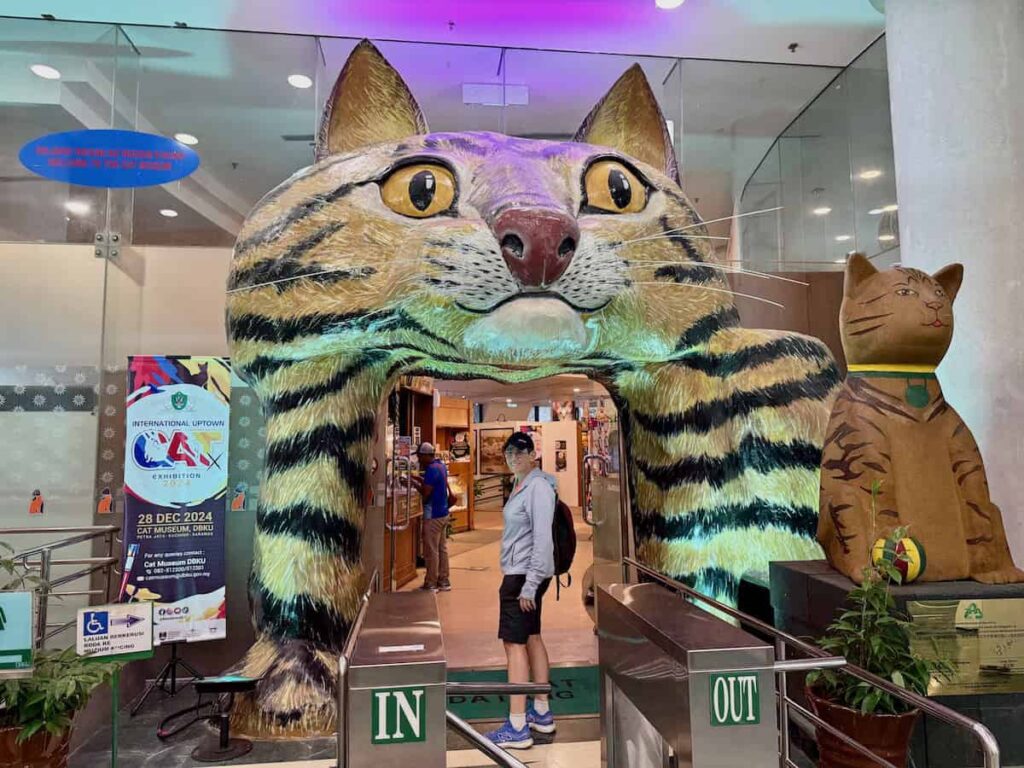
Rainy Day In Kuching
On the second day after breakfast, we decided to book a trip for the next day to see the Wetlands National Park in the hopes of catching a few Irrawaddy dolphins and maybe even some proboscis monkeys. Since we’d be on the water, we didn’t think the rain would matter.
Then we walked in search of more street art, especially those done by Leonard Siaw. Our walk took us to the Brooke Dockyards when it started raining and we sought shelter at the City Mosque, built in a lovely classic Mughal architectural style with golden onion domes and gilded cupolas.
Given the weather (rain was forecasted for the next five days), we decided it was a day for museums. First stop: the Cat Museum. After purchasing our tickets, we walked through the gaping maw of a local cat! There was a cat art exhibition along with prized collections of cat artifacts in the museum.
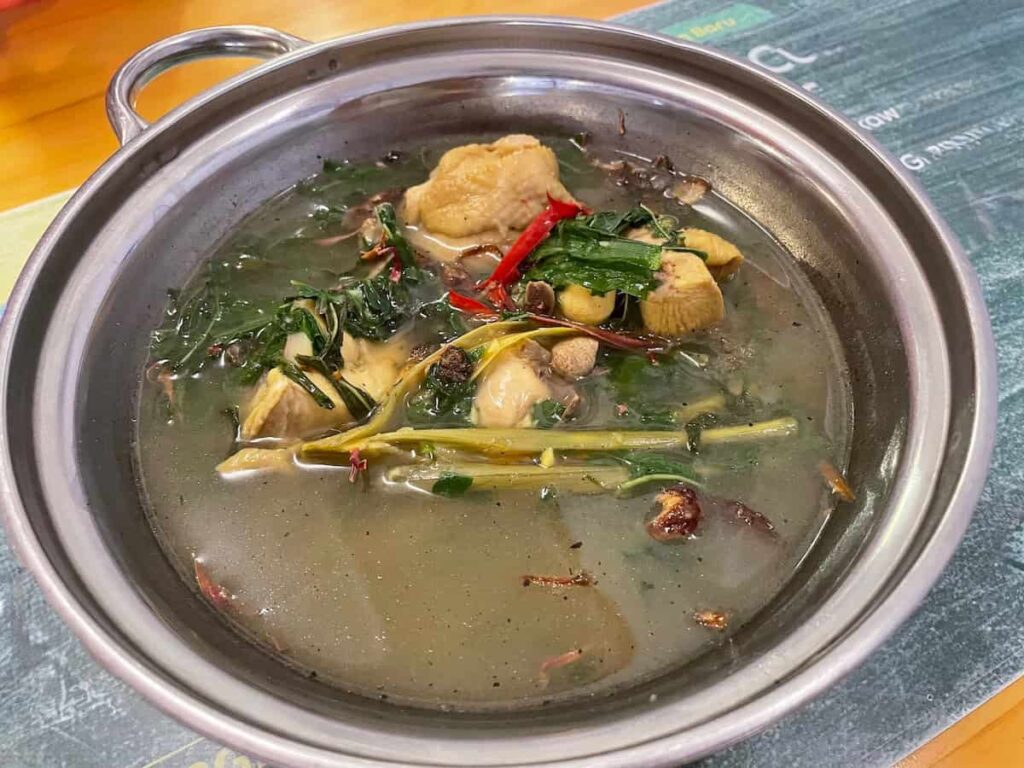
Sampling Bidayuh Food For The First Time
After the Cat Museum, it was time for lunch. We decided to go to the other end of Kuching to eat Bidayuh food. We highly recommend Little Fairy Café, a Sarawak Bidayuh restaurant located at 231 Jalan Padungan. Little Fairy is affordable and, in our Bidayuh-newbie opinion, serves the best ayam pansuh dish in Kuching. Ayam pansuh is chicken cooked inside a bamboo stalk with water, gula apong (made from the sap of the nipah palms), local seasonings, and tapioca leaves. It is flavorful and delicious.
Chasing Dolphins On A Santubong River Cruise
Wednesday opened with light rain and we prayed that it wouldn’t cancel the wetlands cruise. The rain started just before we arrived at the boat club. We waited to see if the cruise would happen. About 20 minutes later, we were able to set off on the Santubong River.
The first amphibious animal we spotted was a huge crocodile hovering near the fish farms. Our arrival must have disturbed its lurking and soon swam off in the opposite direction. It was huge. Our captain and guides then spotted a few silver-leaf monkeys on top of the trees in the mangrove swamp. They are smaller animals that are known to only eat leaves.
Then it was off to chase Dolphins. Irrawaddy dolphins are rare and hard to spot. We were lucky to catch brief glimpses of a few.
After spending time looking for dolphins, we continued sailing towards the mouth of the Santubong River until we got to the estuary where it meets the Salak River. We veered off along Salak and came upon two proboscis monkeys, hanging out on the trees just beyond the mangrove. As we finished our cruise, the sun was making a gallant, and partially successful, attempt to come out.
Back at the hotel, we took a dip in the pool to cool off, then went to the local outdoor food court for kolo mee and satay.
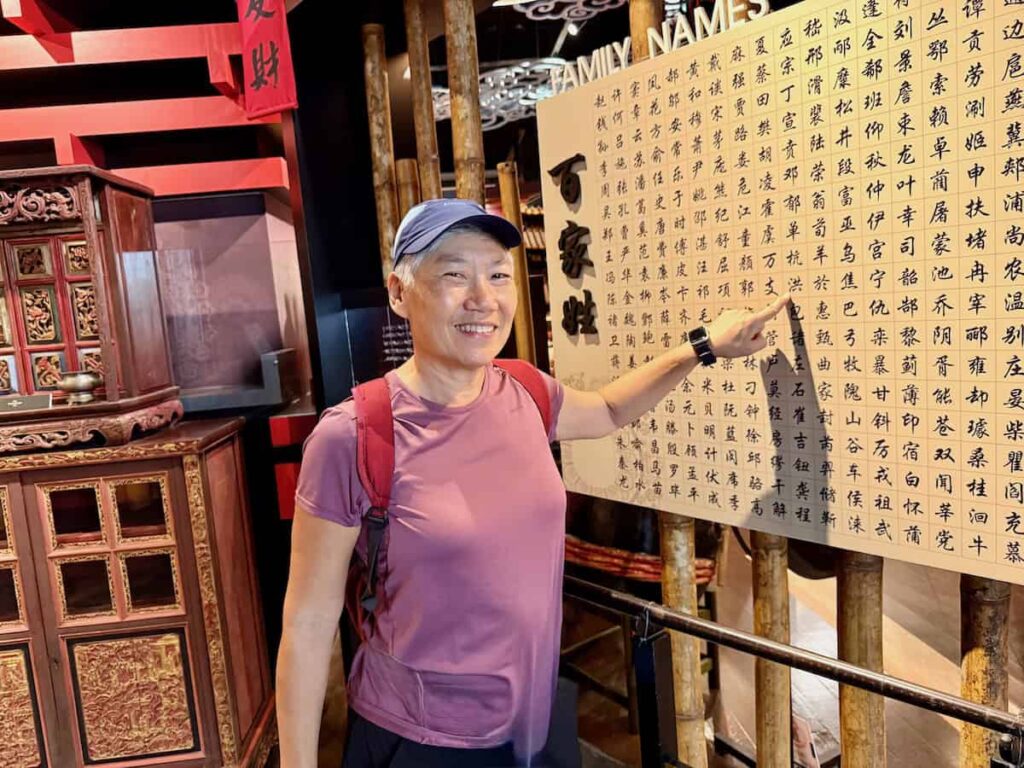
Kuching During Monsoon Season: Rain, Rain, Rain
We ruled out many of the popular outdoor activities (it was Kuching during monsoon season) due to the rain and other reasons. It was too wet for Bako National Park and the Fairy Caves. The Rafflesia flower was not in bloom at Gunung Gading Park. It was fruiting season so the orangutans don’t usually come to the feed platforms at Semenggoh. Instead, we decided to do all the museums and a cooking class from Indah Café and Cooking School.
Visiting Sarawak State Museum and the Borneo Cultures Museum
The skies were decidedly grey when we made our way to the Sarawak State Museum. The museum is currently closed but can still be toured with a guide booked through the Borneo Cultures Museum. Free guided tours are only given twice a day: at 9.30 am and 2.30 pm. We arrived at 2:35 and then raced to the Sarawak Museum to join the tour. It was worth it to see the murals and hear the history of the museum.
We stopped by the Natural History Museum for a short while and then went across the street to the Borneo Cultures Museum. The Borneo Museum was wonderful. We learned a lot about the different cultures and history of Sarawak. If ever in Kuching, it’s a must-do.
After the museum, the skies brightened, and we decided it was time to check out the Orchid Park. There were a limited number of orchids blooming in the park and it is a bit run down. Coming from Singapore, we have been spoiled by the variety of orchids on display at the Singapore Botanic Gardens.
Orchid Park is a short distance to The Astana and a short walk over the Darul Hana bridge back home to the Hilton.
More Bidayuh Food And Durian
For dinner, we decided to try another Bidayuh restaurant, having not gotten enough of ayam pansuh, we wanted to see what Jak Ma’an had to offer. Sue tried the tuak, a local rice wine similar to a slightly fruity white wine. Then we went across the street for Mr. Sim’s durians! At MYR7, we had a very tasty small durian that even Sue pronounced was delicious!
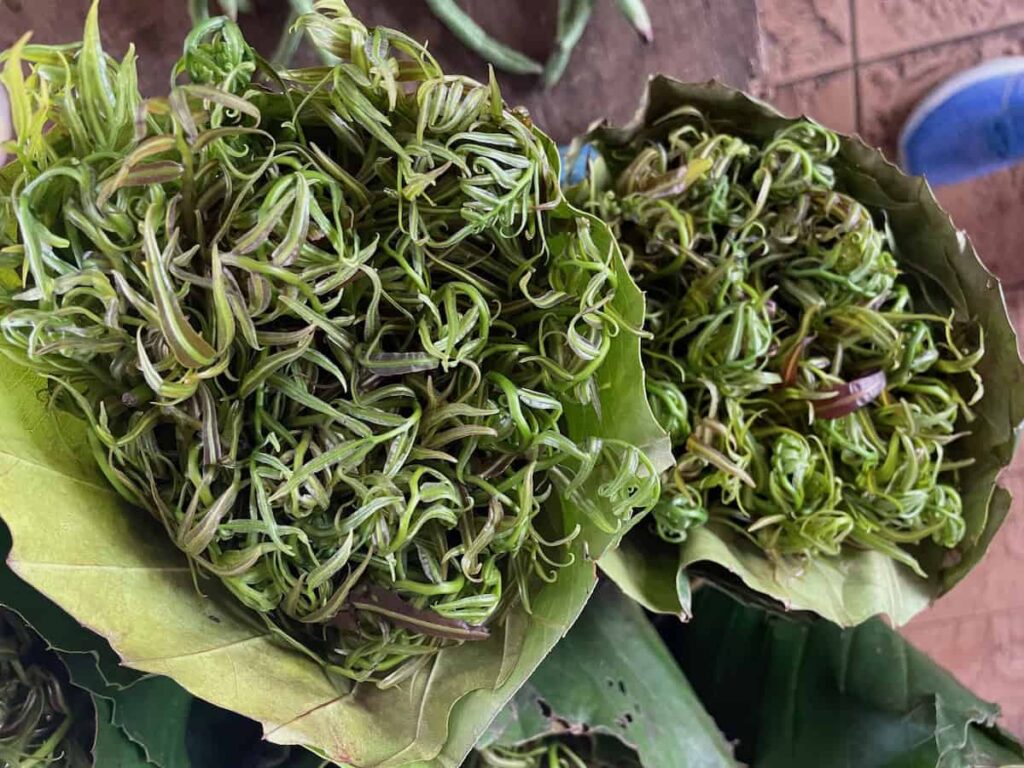
Indah Café Cooking Class
The fourth day saw us hoofing off to Indah Café for our cooking class. Dayang drove us over the river to the Satok Wet Market. There we got introduced to the many different types of local vegetables, both root and green, fruits, chilies, and now our favorite, the jungle fern (midin). We also got to try the local kek lapis, a layer cake made with different flavors. Back to the Think & Tink for our cooking lesson with Pikah and Lisa. We learned to make Sarawak Chicken laksa, pineapple kerabu (achar salad), gula apong chicken, jungle fern with pumpkin in coconut gravy, and herb rice. We had all of that as a feast for lunch.
After lunch, on Pikah’s recommendation, we decided to check out the Apong ice cream in Merdeka Mall. Made with Gula apong (sap from the nipah palm grown only in the mangrove), the ice cream is naturally sweetened and tasty.
The Dash To Fort Margherita
After the ice cream, we took a river taxi to Fort Margherita. We made it there just as the museum was about to close. The receptionist took pity on us and let us in. It was a historical record of colonial times, with a focus on the 1st white rajah of Sarawak, James Brooke, his voyage from England to Southeast Asia, and Charles Brooke, his nephew who became the 2nd white rajah.
After the fort, we agreed with the boatman on a cruise on the Sarawak River (MYR30). There was a nice breeze and a good way to see the historical and architectural accomplishments of Sarawak.
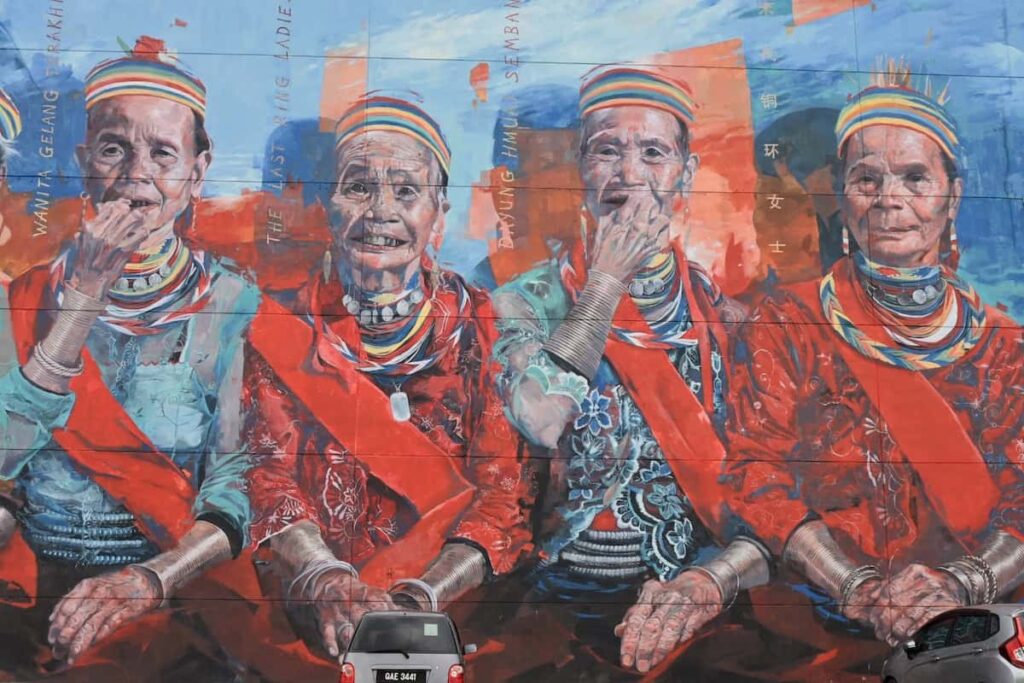
The Last Ring Ladies Mural By Leonard Siaw
On our final day, we just had to see Leonard Siaw’s huge mural entitled The Last Ring Ladies. This amazing masterpiece immortalized the last Ring ladies of the Semban, a sub-tribe of the Bidayuh. The women wore copper rings around their forearms and calves, some starting as young as 10.
Since the mural was near the pitcher plant garden, we decided not to miss this unusual collection of pitcher plants. Pitcher plants are carnivorous feasting on insects. There certainly were a lot of insects and we came away with tons of bug bites.
We then took a Grab back to Kantin for our last lunch in Kuching.
Lunch at Kantin
We had tried going to Kantin for dinner, but they only served Western food during dinner. We weren’t interested. During lunch, however, they serve local food. We came back for our last lunch and had a wonderful meal of dry laksa and nasi lemak.
10 Tips For Visiting Kuching
- If you want to do outdoor activities, avoid visiting Kuching in the monsoon season (December-February) as the rains can make day trips to Bako National Park, and Semenggoh Sanctuary a total washout.
- If you want to avoid crowds, there is plenty to do indoors during the monsoon season.
- Kuching gets very crowded in high season (June-August). We were told that the best time to go are March and April when it is drier and not so hot.
- Take the free walking tour by Paradesa Borneo (others might also do one in high season) to orientate yourself to the city – it is a great way to see the sights, hear the history, and get recommendations of places to eat, and things to do.
- Fort Margherita’s last entrance is at 4:15 pm. Start the tour from the 1st floor and make your way up to the roof where you have a wonderful view of the Kuching Riverfront.
- Use a river taxi (MYR2 per person) to get across to the State Assembly, wander around, and then walk back across the river on the magnificent Darul Hana bridge. There are great viewpoints on the bridge to get pictures of The Astana, the Fort, the Assembly House, and the floating mosque.
- After dinner, stroll along the riverfront to witness colorful dancing fountains in front of the Astana and cascading water along the steps leading down from the Fort.
- If flying AirAsia, try to avoid booking the middle section (after row 14), they are the last to board. Prepaying for your drinks and food ahead of time means you get served first and don’t have to deal with payment (their credit card machine didn’t work in the air).
- Download Grab, Asia’s version of Uber, an economical ride-hailing option to get around the city.
- Check restaurant hours – many close after lunch and reopen for dinner between 3 pm and 6 pm.
Off-season can give you a different perspective on a place without the crowds. Have we inspired you to visit Kuching during Monsoon season? Or anywhere else during the rainy season? We’d love to hear your thoughts.
